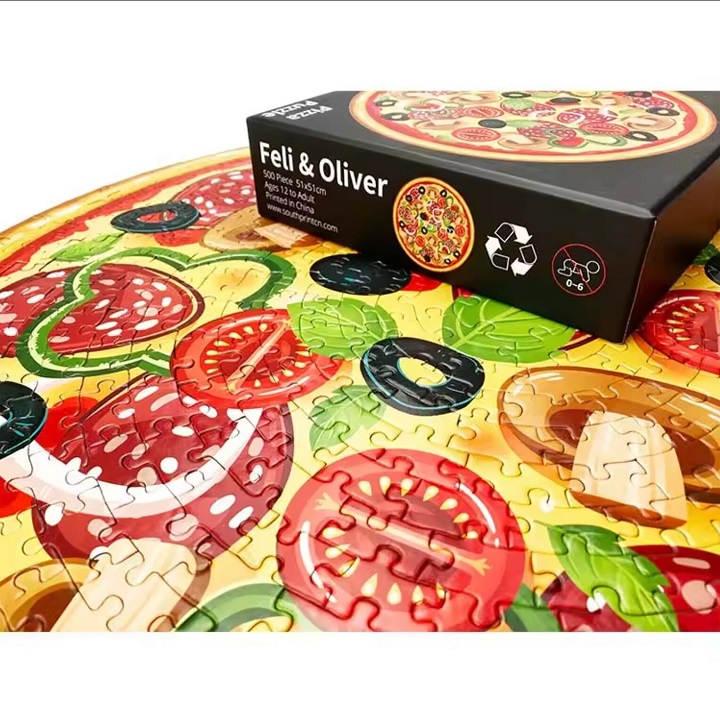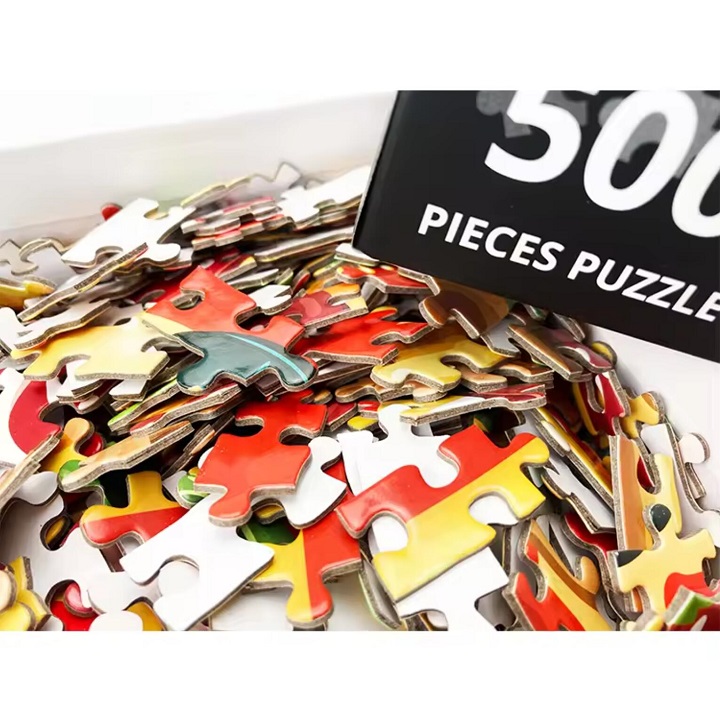Content Menu
● The Rise of Pizza Puzzles: Types and Trends
● 1. Competitive Pizza Puzzle Events
● 2. Jigsaw Puzzles for Home Enthusiasts
● 3. Board Games and Wordplay
● 4. Mathematical Brainteasers
● Why Pizza Puzzles Work: Educational and Social Benefits
● How to Host Your Own Pizza Puzzle Night
● Frequently Asked Questions
● Conclusion
Pizza puzzles combine culinary creativity with brain-teasing challenges, offering a unique blend of entertainment for families, puzzle enthusiasts, and competitive event organizers. From jigsaw puzzles shaped like pepperoni pies to team-based eating-and-solving marathons, this trend has evolved into a cultural phenomenon. Below, we explore the diverse world of pizza-themed puzzles, their educational benefits, and how they’ve become a staple at parties, classrooms, and game nights.

The Rise of Pizza Puzzles: Types and Trends
1. Competitive Pizza Puzzle Events
One of the most exciting developments in the pizza puzzle world is the rise of competitive events that combine eating and puzzle-solving. The River Trails Park District’s Pizza, Puzzle, and Palooza exemplifies this trend. In this high-energy event, teams of four compete to eat an entire 18-inch pizza, drink two pitchers of soda or beer, and complete a 300-piece puzzle—all within two hours. The event requires participants to be 21 or older, with a $200 entry fee per team, and it serves as a fundraiser for community programs.
These events are not just about speed but also strategy and collaboration. Teams must decide how to divide tasks: who eats first, who tackles the puzzle, and how to pace themselves to avoid burnout. The combination of physical and mental challenges makes these events uniquely engaging and a great way to bring people together.
2. Jigsaw Puzzles for Home Enthusiasts
For those who prefer a more relaxed setting, pizza-themed jigsaw puzzles offer hours of immersive fun. Brands like Bark & Vine and Springbok have created beautifully illustrated puzzles featuring mouth-watering pizzas with diverse toppings and vibrant kitchen scenes.
550-piece puzzles are perfect for casual puzzlers and families, often including a slice-by-slice assembly guide to help beginners. These puzzles typically feature whimsical designs such as cartoonish pepperoni slices, colorful vegetables, and quirky pizza chefs.
1,000-piece puzzles present a more serious challenge, with intricate details like melting cheese strands and realistic textures that require patience and keen observation. Completing these puzzles can take 8 to 10 hours, making them ideal for weekend projects or group activities.
Some puzzles even incorporate educational elements, such as symbols on the back of pieces to help with sorting or fun facts about pizza history printed on the box, adding an extra layer of learning to the experience.
3. Board Games and Wordplay
Pizza puzzles are not limited to physical jigsaws. Themed board games like P For Pizza bring wordplay and quick thinking into the mix. Players compete to shout out words that start with a given letter and fit into specific categories, such as "P for pepperoni" or "S for sauce." The game features difficulty tiers—green for easy and red for hard—that determine where players place their pizza slices on a pyramid-shaped board. The goal is to build the tallest, most stable pizza pyramid before the timer runs out.
This game is perfect for parties and family gatherings, encouraging creativity, quick reflexes, and friendly competition.
4. Mathematical Brainteasers
Pizza puzzles also extend into the realm of mathematics. The classic "Pizza Box Problem" asks: What is the largest number of pizzas you cannot order using combinations of 6-, 9-, and 20-box sets? This problem is a famous example of the Frobenius coin problem in number theory.
The answer is 43—meaning you cannot buy exactly 43 pizzas using any combination of these box sizes. This puzzle encourages players to explore modular arithmetic, divisibility, and combinatorial reasoning. It’s a favorite among math teachers and puzzle enthusiasts alike for demonstrating how everyday problems can be transformed into fascinating mathematical challenges.

Why Pizza Puzzles Work: Educational and Social Benefits
Pizza puzzles are more than just fun—they offer a range of cognitive, social, and emotional benefits:
Cognitive Development: Jigsaw puzzles enhance spatial reasoning, memory, and problem-solving skills. Mathematical pizza puzzles stimulate logical thinking and numerical fluency.
Team Building: Competitive pizza puzzle events require communication, strategy, and cooperation, making them excellent for corporate team-building exercises or community gatherings.
Family Bonding: Cooperative games like P For Pizza encourage interaction across generations, fostering shared experiences and laughter.
Stress Relief: Engaging in puzzles can reduce anxiety and promote mindfulness, especially when combined with the comfort of enjoying delicious pizza.
How to Host Your Own Pizza Puzzle Night
Hosting a pizza puzzle night is a fantastic way to bring friends and family together. Here’s a step-by-step guide:
| Step | Details |
| 1. Choose a Puzzle Type | Select a 550-piece jigsaw for casual fun or a math challenge for adults. |
| 2. Set Rules | Decide if eating pizza is part of the challenge or just a snack. Set a time limit (e.g., 2 hours). |
| 3. Prepare Supplies | Gather puzzles, pizza (consider dietary restrictions), drinks, and timers. |
| 4. Organize Teams | Divide guests into teams or play individually depending on group size. |
| 5. Prizes | Offer pizza coupons, puzzle kits, or novelty items as rewards. |
Adding themed decorations and background music can enhance the atmosphere, making the event memorable and enjoyable.

Frequently Asked Questions
Q1: Are pizza puzzles suitable for children?
A: Yes! Many pizza jigsaw puzzles are designed for ages 7 and up. Math puzzles can be adapted to different skill levels, making them accessible for kids with guidance.
Q2: How do I organize a competitive pizza puzzle event?
A: Secure a venue with enough space for teams, set clear rules combining eating and puzzle-solving tasks, and provide timers and prizes to motivate participants.
Q3: Can pizza puzzles be educational?
A: Absolutely. They teach fractions, pattern recognition, teamwork, and mathematical concepts, making them useful tools in classrooms and homeschooling.
Q4: Where can I buy quality pizza puzzles?
A: Brands like Bark & Vine and Springbok offer durable, artist-designed puzzles available online and in specialty stores.
Q5: What’s the hardest pizza puzzle?
A: The 1,000-piece Pizza Night puzzle is known for its complexity due to detailed toppings and subtle color variations, challenging even experienced puzzlers.
Conclusion
Pizza puzzles represent a delightful intersection of food, fun, and mental challenge. Whether you’re biting into a slice while piecing together a jigsaw, racing against the clock in a competitive event, or solving mathematical riddles, pizza puzzles engage the mind and palate alike. Their versatility makes them perfect for all ages and occasions—from family game nights to community fundraisers. So next time you crave a slice, why not add a puzzle piece to your enjoyment?
































